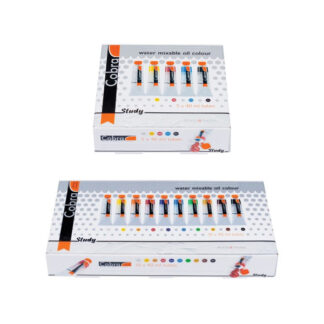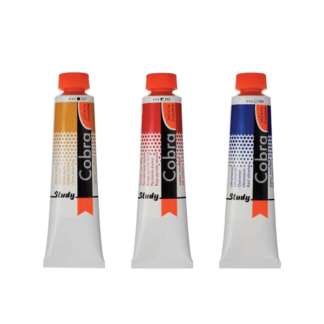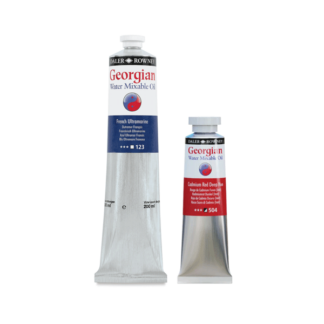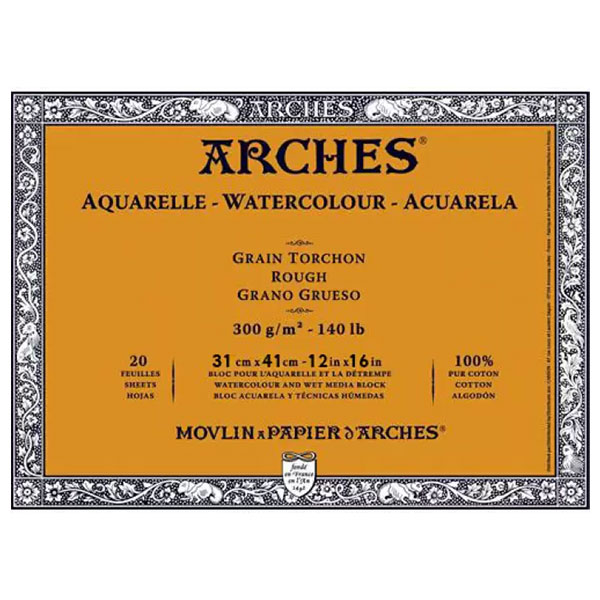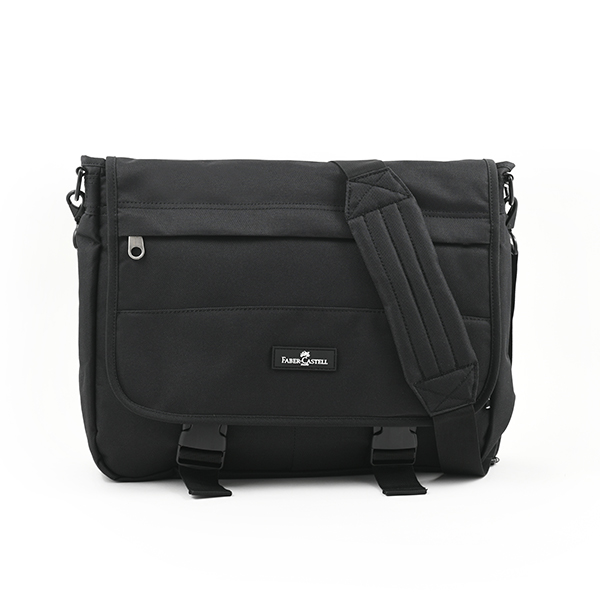
Oil painting has been around for centuries, and has come to be known as one of the most prominent forms of art media. After such long reign, one must wonder if advancement on any level is even possible? Traditional Oil Colour comprises finely ground pigments and the essential drying oils (usually Linseed-, Poppy- or Safflower Oil). This composition leads to the venerable paint’s slow drying time. The drying time, along with transparency, sheen, and thickness, can be altered by adding more drying oils and/or solvents. These solvents, however, can pose threat to the creative expression of the more sensitive-skinned or asthmatic artist.
Introducing, Water Soluble Oils! Also known as Water-Mixable Oils or Water-Miscible Oils, they are a worthy substitute for traditional oil paints – with all the same appeal, but no need for pervasive solvents during the diluting- and cleaning process. Simply use water! These special oil paints contain your standard pigments, a modified drying oil as a binder, and an emulsifying additive. This additive helps form a stable blend of tiny oil droplets within the water.
Being relatively new to the art supply market, there is still plenty of uncertainty and questions surrounding this innovative paint. We hope to clear up any queries with this compilation of the most commonly asked questions and their answers.
Daler Rowney Georgian Water-Mixable Oil Colour
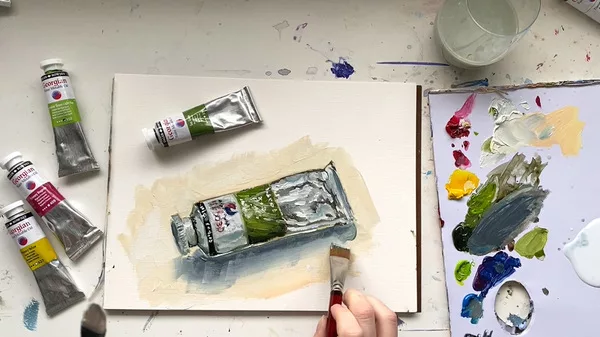
Are Water-Mixable Oils real Oils?
Yes! They are water mixable, not water-based.
You can mix and apply them with the same techniques as traditional oils, with the added advantage of them being able to be diluted with water and, whilst wet, be removed from brushes and palettes with soap and water.
Can Water-Mixable Oils be mixed with Traditional Oil paint or Acrylics?
Like regular oils, they cannot be mixed with Acrylic paint but you can paint over Acrylic paint. It’s possible to mix Water-Mixable Oils with regular oils but in doing so they lose their water-solubility.
What is the consistency of Water-Mixable Oils like?
Water-Mixable Oils can be a little more stringy or fluid than regular oils. It important to keep in mind that Water-Mixable Oils are still oils that are merely water soluble, but this does not make them a watercolour. There is risk of a streaky, stringy wash when diluting these oils with too much water. If you wish to paint thicker than a wash, and thus thin the paint with just a few drops of water, the mix becomes a little stickier to work with, making it harder to get a nice flow.
This can be remedied by mixing the oil paint with regular oils, but a whole range of Water-Mixable Oil mediums are also available to achieve a good flow and desired consistency. Water-Mixable Oils perform best when manipulated by their painting mediums rather than water but water is perfect for the cleaning process.
What is the effect of water on the colour value and sheen of Water-Mixable Oils?
When only water is used to thin Water-Mixable Oils for washes, it’s harder to get a solid tone established in comparison to results of the thinning process regarding artist-quality acrylics or traditional oils. Water-Mixable Oils behave more like a student-grade acrylic in their coverage. You’ll find that the pigments tend to temporarily lighten in colour when water is used. Once more, it is recommended to use the appropriate medium for the best washes and/or glazes.
Similar to when you cut through traditional oil paint with turpentine, a matt surface is eventually achieved. The less oil there is in the paint, the less gloss there is. Applying a varnish can be a solution.
Cobra Study Water-Mixable Oil Colour

Do Water-Mixable Oils dry differently from regular Oils?
Water-Mixable Oils will dry through only oxidation if used straight from the tube or mixed with standard drying oils or conventional oil paints, but when water is used to dilute the special paint, there are two stages to its drying: First, the water evaporates. Then, just like traditional oils, the curing process, which is drying by oxidation or exposure to air, starts. Therefore, unlike other water soluble media, Water-Mixable Oil paintings cannot be reactivated with water when dry.
How long do Water-Mixable Oils take to dry?
When water is utilized, it takes 5 – 10 minutes for the water to evaporate. When the oil paint is used straight from the tube or mixed with drying or regular oils, it becomes touch-dry within 1 – 3 days. Depending on how thick you paint, Water-Mixable Oils retain their elasticity and workability for up to 48 hours.
Also, the more drying oil medium you add to the paints, the longer they take to dry. Many white oils contain Safflower Oil rather than Linseed Oil as a binder because it is a paler oil, but this takes even longer to dry.
How do you prepare a surface when using Water-Mixable Oils?
Canvases labeled as ‘universally primed’ (suitable for oil and acrylic) are suitable for Water-Mixable Oils. Traditionally prepared canvases, prepped with an oil-based primer, are also a possibility if you wish to use the paint undiluted or mixed with a drying oil medium.
If you intend to use very watery washes at the underpainting stage, then Acrylic Gesso should be used on the surface as the starting ground to ensure proper adhesion and absorption.
How do you varnish a Water-Mixable Oil painting?
Once touch-dry, Water-Mixable Oils are just like any other oil painting and take about 6 months to cure before you can varnish with traditional varnishes. You can use conventional picture varnish for Water-Mixable Oil paintings but the Water-Mixable Oil varnishes do not contain conventional solvents, so, like the Water-Mixable Oils themselves, they are great for shared spaces and for artists that are avoiding the use of hazardous solvents. The Water-Mixable Oil varnishes can be used on conventional oil paintings as well as Water-Mixable Oil paintings.
View our range of Water-Mixable Oil Colours:
-
Cobra Study Water Mixable Oil Colour Sets – Royal TalensR549.00 – R1 799.00
-
Cobra Study Water Mixable Oil Colours – Royal TalensR139.00 – R375.00
-
Georgian Water Mixable Oil Paint Mediums – Daler RowneyR215.00
-
Product on saleGeorgian Water Mixable Oil Colour Sets – Daler RowneyR495.00 – R1 255.00
-
Product on saleGeorgian Water Mixable Oil Colours – Daler RowneyR99.00 – R425.00

